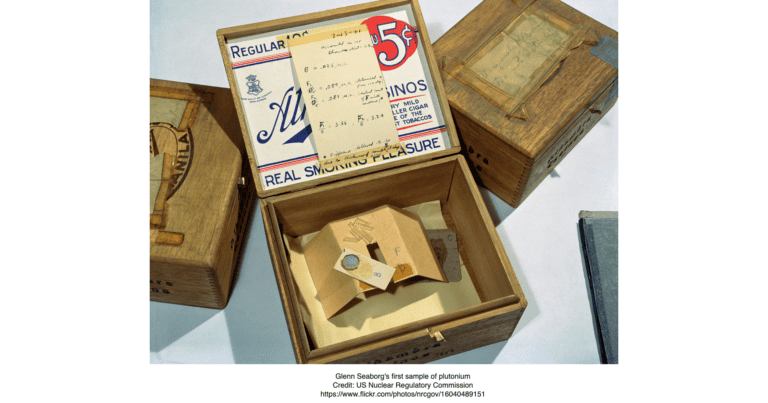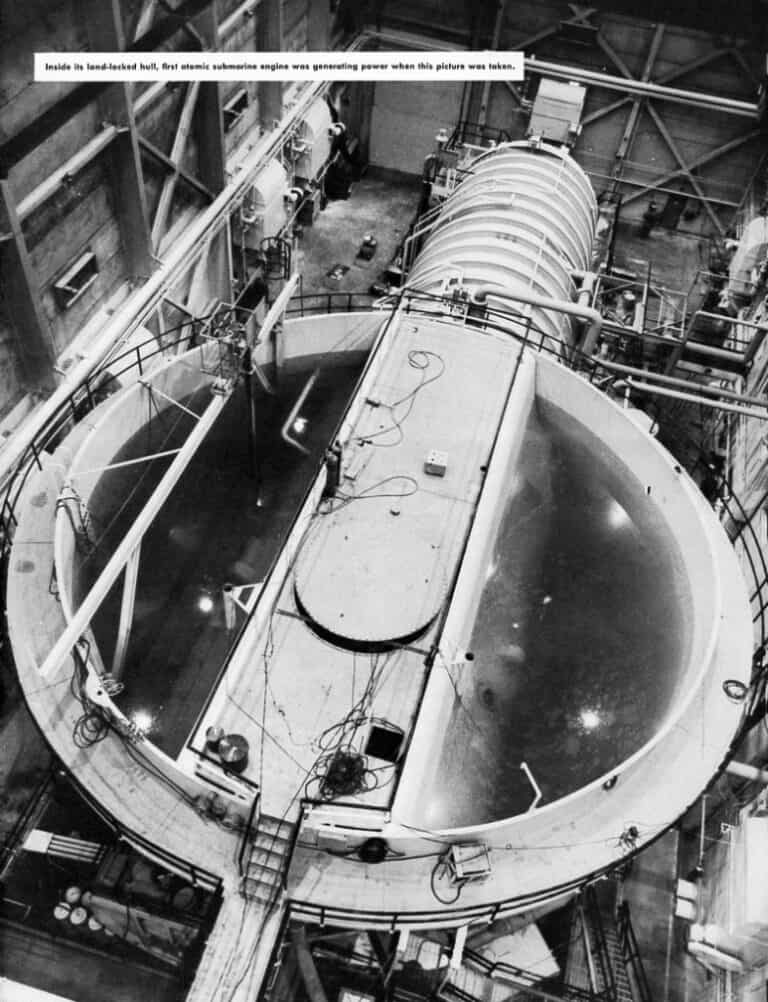Atomic Show #245 – Building a prosperity program on used nuclear fuel foundation
I applaud reasoned, long term thinking that aims to use science, technology and deep understanding of human wants and needs — aka politics — to set a course for success.
You can find one of my favorite current examples of an effort that meets my criteria in the expansive, lightly populated, rather dry state of South Australia. South Australia is blessed with abundant natural resources, including nearly one third of the world’s known uranium resources. It has developed a resources-heavy economy that is now paying the price of being a little too heavily dependent on the world commodities markets.
State debt is high on a per capita basis, unemployment is higher than average, and many leaders are casting about for ways to build a more solid foundation for continued prosperity.
Senator Sean Edwards, a Liberal Party Senator from South Australia, has sponsored the development of a solid prosperity plan guided by one of the basic principles of economic success — provide a product or service that solves a problem that is important enough for customers to be willing to pay dearly for a solution.
In this case, Edwards and his team — led by Ben Heard, a person who is no stranger to Atomic Insights participants — have decided that they should plan to offer a service to the world that effectively answers the frequently asked question, “What do you do with the [nuclear] waste?”
Their timing was fortuitous; they had already begun working on their used fuel storage and recycling plan when the South Australian government announced the formation of a Royal Commission on the nuclear fuel cycle. As they explain during our conversation; that announcement came as a surprise. It was a welcome surprise, but Sean and Ben assured me that they did not know that it was coming.
Their powerful prosperity plan is not something that was sketched out on a couple of white boards or Post-it notes; it is the result of months of research, modeling and intensive critical review. I’ve obtained their permission to share their plan — titled Transforming our economy. Cleaning our energy. Sustaining our future — with you.
It is a masterful piece of work; a vision that is solidly supported by facts, available technology, identified resources, and a well-founded optimism for the future.
Briefly stated, the plan envisions South Australia as an international destination for used nuclear fuel. The state will accumulate an inventory of the material in well-proven dry cask storage systems. With revenues from taking responsibility for the waste, it will build a commercially useful, pilot scale pyroprocessing plant to convert used nuclear fuel into metallic fuel assemblies suitable for fueling sodium cooled fast reactors, most likely using GE-Hitachi’s PRISM design.
When the plan reaches a mature state, used light water reactor fuel will be routinely accepted for storage, recycling systems will be in place, and enough nuclear power plant capacity will be installed to provide all the electricity South Australia can consume — with some left over for growth and selling to neighboring states.
To answer the South Australians who pose the inevitable question of “What’s in this for me?”, the plan proposes setting a wholesale price of $0 for the electricity generated for state residents, industries and commercial establishments.
If you can’t believe that price point can be profitable; you’ll have to download the plan and run the numbers yourself.
Sean, Ben and I had a great chat; we all agreed that it would be just the first of many as the plan gains acceptance and begins implementation. I hope you enjoy the show and send your best wishes to people who are striving to make the world a better place.
Podcast: Play in new window | Download (Duration: 47:57 — 44.0MB)
Subscribe: RSS




This post has been duly linked to the “Nuclear Fuel Cycle Royal Commission” page on Facebook. The fanatic SA antinukes had been having a virtual field day on the page until Christine Brook and I got involved. BTW, I found it researching the issue for your last podcast.
As a Utahn, I am sort of jealous that my state isn’t taking a similar course of action. We have some “ideally useless” desert that could bring in some great revenue if a couple of square mile of it were devoted to storing spent fuel.
Anyway, hats off to the visionaries in South Australia.
Some people have been trying. Specifically, they have been trying to get part of the Skull Valley Reservation approved for such a purpose.
Yes, that was back several years ago. The Goshute tribe was going to work with a company called Private Fuel Storage. Governor Leavitt had a fit about it. He worked to make sure that no rail spur could be built to bring the casks to the reservation (and any other way to stop it).
Uh oh. Whats this, despoil the desert? Oh, its only renewables that shouldn’t do so. Ok, I get it.
There’s a qualitative difference between covering hundreds of square miles of desert in material that moves at high speed or concentrates solar incidence to high levels and building a few concrete pads and a fence on less than a square mile of desert and setting some inert concrete casks (the equivalent of big rocks) there.
Do you really need help making the distinction or were your fingers just itching for a little keyboard workout?
Just imagine the great habitat these casks would supply for local birds and what not. Slightly warm during the cold desert nights and up high away from scrounging vermin. Poa obviously has no idea how very little “spent” fuel is produced at commercial Nuclear Power Plants.
@poa
It’s a matter of scale. A single square mile would be sufficient space for storing an inventory of all of the used fuel created in 55 years of nuclear plant operations in the United States. During the last 30 of those years, fission has produced 20% of the electricity in the US.
Please compare that to the amount of land that is required to collect enough solar energy to provide a steady output of 1000 MW for 24hrs per day.
Terrapower seem to be considering a fast MSR program.
http://energyfromthorium.com/forum/viewtopic.php?f=5&t=4610&p=62927#p62922
Pyro-processing and fast MSR look like the right combination for dealing with the used fuel. It could go better with the storage services. They could be exporting power stations with a constant assured fuel supply by 2030!
The Americans could change track and start their own work once Australians succeed.